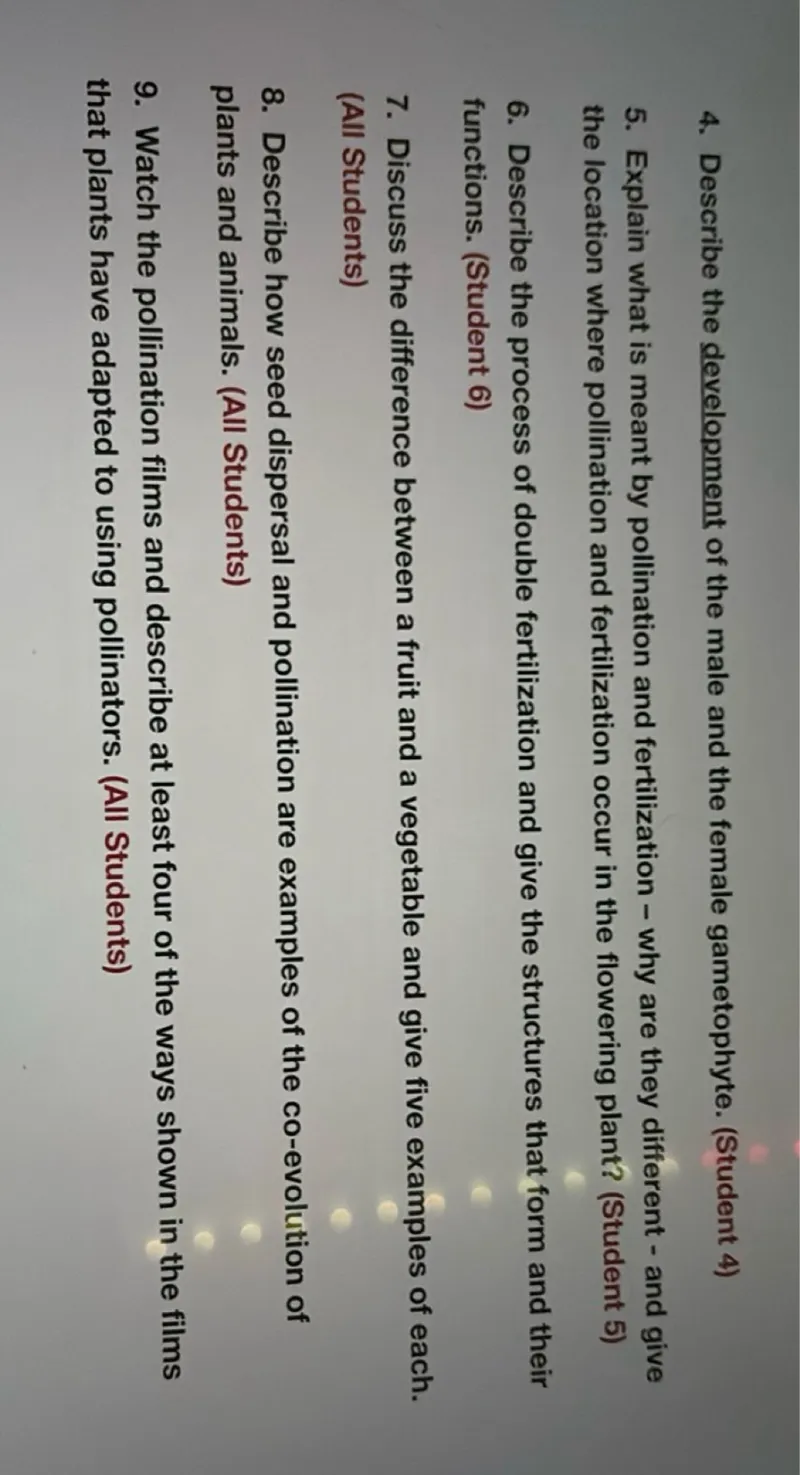Questions: 4. Describe the development of the male and the female gametophyte. (Student 4) 5. Explain what is meant by pollination and fertilization - why are they different - and give the location where pollination and fertilization occur in the flowering plant? (Student 5) 6. Describe the process of double fertilization and give the structures that form and their functions. (Student 6) 7. Discuss the difference between a fruit and a vegetable and give five examples of each. (All Students) 8. Describe how seed dispersal and pollination are examples of the co-evolution of plants and animals. (All Students) 9. Watch the pollination films and describe at least four of the ways shown in the films that plants have adapted to using pollinators. (All Students)

Transcript text: 4. Describe the development of the male and the female gametophyte. (Student 4)
5. Explain what is meant by pollination and fertilization - why are they different - and give the location where pollination and fertilization occur in the flowering plant? (Student 5)
6. Describe the process of double fertilization and give the structures that form and their functions. (Student 6)
7. Discuss the difference between a fruit and a vegetable and give five examples of each. (All Students)
8. Describe how seed dispersal and pollination are examples of the co-evolution of plants and animals. (All Students)
9. Watch the pollination films and describe at least four of the ways shown in the films that plants have adapted to using pollinators. (All Students)





